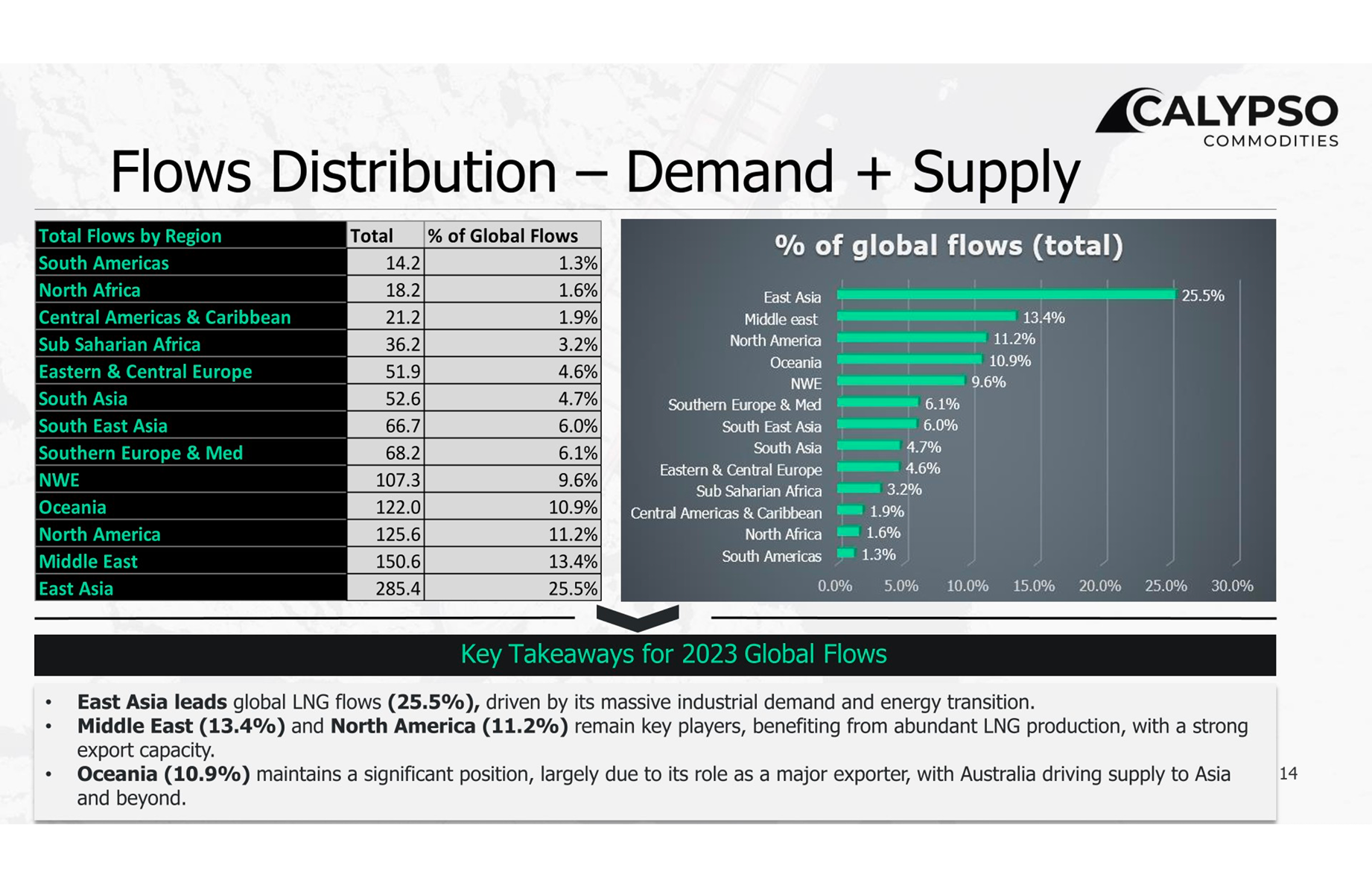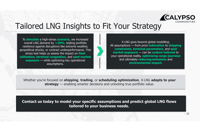Predicting Global LNG Flows: Leveraging X-LNG's Computational Power Through Customised Modelling
Check out the full detailed analysis here
Leveraging X-LNG’s computational power, this case study demonstrates how our platform can simulate, optimise, and forecast future LNG flows by adjusting every technical assumption — from vessel capacity and voyage routing to price indexation and terminal constraints. By integrating verified commercial data and applying advanced filtering logic, X-LNG delivers a dynamic, future-oriented model of global LNG trade under any market scenario.
Portfolio Scale: The X-LNG global model incorporates the entire commercial fleet andall major trade corridors, with non-commercial movements removed (e.g.bunkering, testing, domestic loops). Cargo volumes are standardised (tonnes →MMBtu → cargo units) using IGU conversion factors and allocated to regionalclusters. Every parameter is customisable — enabling simulations that reflectyour operational reality and strategic priorities.


Key Trade Flow 1: Middle East to Asia
Qatar-origin cargoes are modelled to supply high-demand Asian markets (Map TaPhut, Zhuhai, Zhangzhou), with routing and scheduling dynamically adapted toprice spreads, congestion risks, and fleet availability.
Key Trade Flow 2: USA to Europe
US Gulf Coast exports (Sabine Pass, Freeport) are optimised for Europeandelivery to terminals such as Grain, Zeebrugge, and BBG, with routes instantlyrecalculated when market conditions shift.
Key Trade Flow 3: Australia to East Asia
Australian LNG (Wheatstone, Gladstone) is strategically allocated to China, Japan, South Korea, and Taiwan, balancing long-term contract obligations with opportunistic spot deliveries in response to price signals.
Market Insights:
- Exports: X-LNG’s optimisation framework strategically balances Middle East, North America, and Oceania supply to serve multiple markets without over-reliance on a single route.
- Imports: East Asia’s dominant demand share can be stress-tested against different supply mixes and disruption scenarios.
- Top Players: The platform models interplays between the largest exporters and importers, enabling forward-looking flow predictions under changing fundamentals.

.svg)
Legal Notice
Impressum
Angaben gemäß § 5 TMG
Calypso Ventures GmbH
Bismarckstraße 10/12
10625 Berlin
Handelsregister: HRB 239736 B
Amtsgericht Charlottenburg
Umsatzsteuer: DE342781749
Vertreten durch:
Michael Schach
Kontakt
Telefon: +49 30 41734423
E-Mail: [email protected]
Nutzungsvereinbarungen
Imprint
Disclosures according to German law § 5 TMG
Calypso Ventures GmbH
Bismarckstraße 10/12
10625 Berlin
Registered number: HRB 239736 B
Amtsgericht Charlottenburg (Germany)
VAT: DE342781749
Represented by:
Michael Schach
Contact
Phone: +49 30 41734423
E-Mail: [email protected]
User Agreements
Predicting Global LNG Flows: Leveraging X-LNG's Computational Power Through Customised Modelling

Check out the full detailed analysis here
Leveraging X-LNG’s computational power, this case study demonstrates how our platform can simulate, optimise, and forecast future LNG flows by adjusting every technical assumption — from vessel capacity and voyage routing to price indexation and terminal constraints. By integrating verified commercial data and applying advanced filtering logic, X-LNG delivers a dynamic, future-oriented model of global LNG trade under any market scenario.
Portfolio Scale: The X-LNG global model incorporates the entire commercial fleet andall major trade corridors, with non-commercial movements removed (e.g.bunkering, testing, domestic loops). Cargo volumes are standardised (tonnes →MMBtu → cargo units) using IGU conversion factors and allocated to regionalclusters. Every parameter is customisable — enabling simulations that reflectyour operational reality and strategic priorities.

Key Trade Flow 1: Middle East to Asia
Qatar-origin cargoes are modelled to supply high-demand Asian markets (Map TaPhut, Zhuhai, Zhangzhou), with routing and scheduling dynamically adapted toprice spreads, congestion risks, and fleet availability.
Key Trade Flow 2: USA to Europe
US Gulf Coast exports (Sabine Pass, Freeport) are optimised for Europeandelivery to terminals such as Grain, Zeebrugge, and BBG, with routes instantlyrecalculated when market conditions shift.
Key Trade Flow 3: Australia to East Asia
Australian LNG (Wheatstone, Gladstone) is strategically allocated to China, Japan, South Korea, and Taiwan, balancing long-term contract obligations with opportunistic spot deliveries in response to price signals.

Market Insights:
- Exports: X-LNG’s optimisation framework strategically balances Middle East, North America, and Oceania supply to serve multiple markets without over-reliance on a single route.
- Imports: East Asia’s dominant demand share can be stress-tested against different supply mixes and disruption scenarios.
- Top Players: The platform models interplays between the largest exporters and importers, enabling forward-looking flow predictions under changing fundamentals.

.svg)
Legal Notice
Impressum
Angaben gemäß § 5 TMG
Calypso Ventures GmbH
Bismarckstraße 10/12
10625 Berlin
Handelsregister: HRB 239736 B
Amtsgericht Charlottenburg
Umsatzsteuer: DE342781749
Vertreten durch:
Michael Schach
Kontakt
Telefon: +49 30 41734423
E-Mail: [email protected]
Nutzungsvereinbarungen
Imprint
Disclosures according to German law § 5 TMG
Calypso Ventures GmbH
Bismarckstraße 10/12
10625 Berlin
Registered number: HRB 239736 B
Amtsgericht Charlottenburg (Germany)
VAT: DE342781749
Represented by:
Michael Schach
Contact
Phone: +49 30 41734423
E-Mail: [email protected]
User Agreements



.svg)
